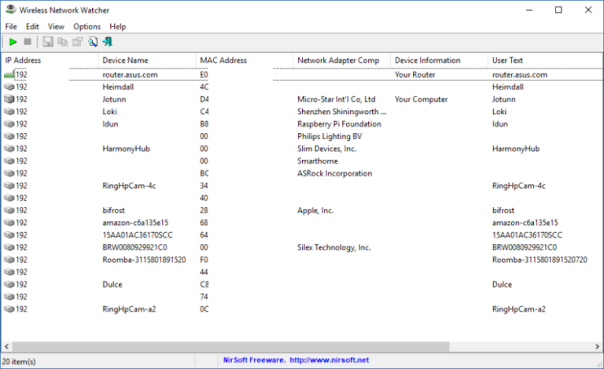Is the internet running slowly? Here's how to spot devices utilizing your connection and turn them off if you think your neighbor is stealing your Wi-Fi.
Is the speed of your internet a little slower than usual? When you cast media to your TV or in File Explorer, do you notice any indications of unfamiliar devices? Here's how to check whether your neighbor is stealing your Wi-Fi (and boot them off).
You could remark, "Oh, somebody's using my internet to watch Netflix." What's all the fuss about? You generally don't want other people on your network, even if you have a little extra bandwidth, especially if it's unsafe.
It's risky if someone gains access to your network since they can use any machine connected to it. They could get access to files you've unintentionally shared, they might infect you with malware, and in certain cases, they might even steal your passwords and other private data.
As a result, you need to be careful to only allow reputable devices to join your network. Fortunately, there are free programs available that will enable you to view everyone currently using your Wi-Fi.
View Your Network's Users
Wireless Network Watcher is free, portable software that Windows users may download (to obtain it, scroll down to the Zip download link below "Feedback"). It will provide you a list of every device that is presently connected to your network so you can tell which ones are yours.
Launch Wireless Network Watcher and it will start scanning your network the moment you do. This will take a moment or two; when it is finished, you will see "Scanning" in the bottom-left corner. When it's finished, the notification will go and a complete list of your connected devices will emerge.
If you're not too tech-savvy, the resultant list can seem a little confusing but don't panic. The IP address and MAC address information can be disregarded for the time being. Just concentrate on the Device Name and Network Adapter Company columns if you're using Wireless Network Watcher.
For instance, in Wireless Network Watcher, which is the name of my wife's MacBook, I notice an item with the name "Dulce." I see another without a name, but it is most likely the hub for my Philips Hue lights because "Philips Lighting BV" is listed as the manufacturer of the network adapter. Double-clicking on a device will allow you to add "User Text," which will help you identify each device and make this list more manageable.
There aren't as many excellent solutions for Mac users, however, LanScan is a good choice despite costing $6 for full capability. Most other applications either cost a lot of money or have limitations that make them unsatisfactory. The information you want can be on your router's settings page if you're using a Mac. You might also try Fing if you have an iPhone.
Check the Settings on Your Router
If you're fortunate, you'll be able to identify every item on that list, but there could be a few that lack sufficient details. For instance, after reading through my list, I was left with a few gadgets that had no maker or name indicated. The web interface of my router, though, allowed me to access a little bit more data.
By entering your router's IP address in the address bar of your browser, you may access its control page. Once there, search for a menu item with the words "Attached Devices" or "Client List" in the name. This will show you a list that is comparable to Wireless Network Watcher's, albeit the data could be somewhat different. Cross-referencing the two unknown devices revealed that one of them was identified in Wireless Network Watcher but not in my router's interface as "AzureWave Technology, Inc." I was able to note that it was my Rachio sprinkler system after a quick Google search and continue.
Look around your home for any internet-connected devices you might have overlooked if you notice any additional unlabeled items in the list. I saw that my Amazon Echo wasn't mentioned, so I used the Alexa app on my phone to see if I could find a match between its MAC address and one of the unlabeled objects in Wireless Network Watcher.
In a perfect world, you'll be able to recognize any device connected to your network. There's a possibility that someone nearby may be utilizing your Wi-Fi if there is any leftovers and you've searched your home for other internet-connected gadgets without success.
Boost the security of your network
Even if you find that a neighbor is using your Wi-Fi without your permission, you can simply tell them to stop by changing the router's security without having to track them down and make a scene. Find the opportunity to update your password by returning to your router's web interface (usually under the "Wireless" section somewhere).
If you don't already, you must create a strong password right away if you don't already. Your personal information is accessible to every inexperienced hacker who drives by if you don't have a password. Since WPA2 is harder to break than the out-of-date WEP, you should use it as your password type.
Verify that WPS is not active. Turn off this function if it's presently on since it makes it simpler for others to guess your Wi-Fi password. You may always enable your router's guest network or just wirelessly distribute the password if you want to allow visitors access to your Wi-Fi without allowing them access to your devices and data.
Changing your password to something new should be enough to keep your neighbors off if you already had one-possibly because it was weak and simple for them to guess. Naturally, you'll also need to re-authenticate each of your devices, but knowing that they are all yours should let you sleep a bit easier.






0 Comments